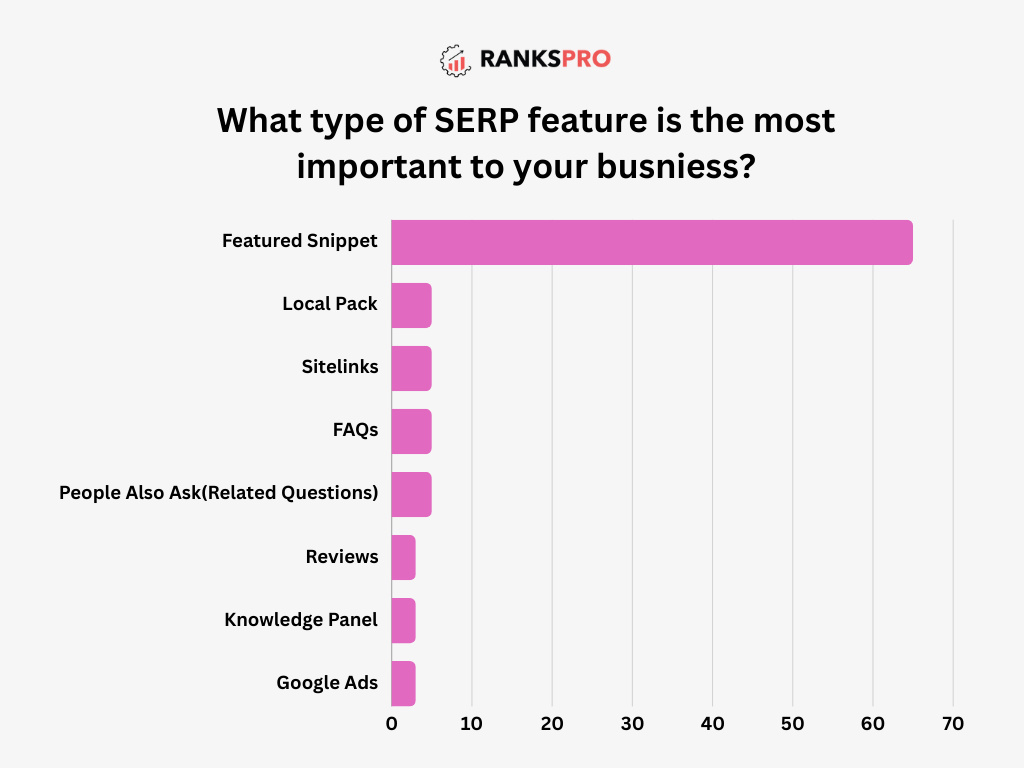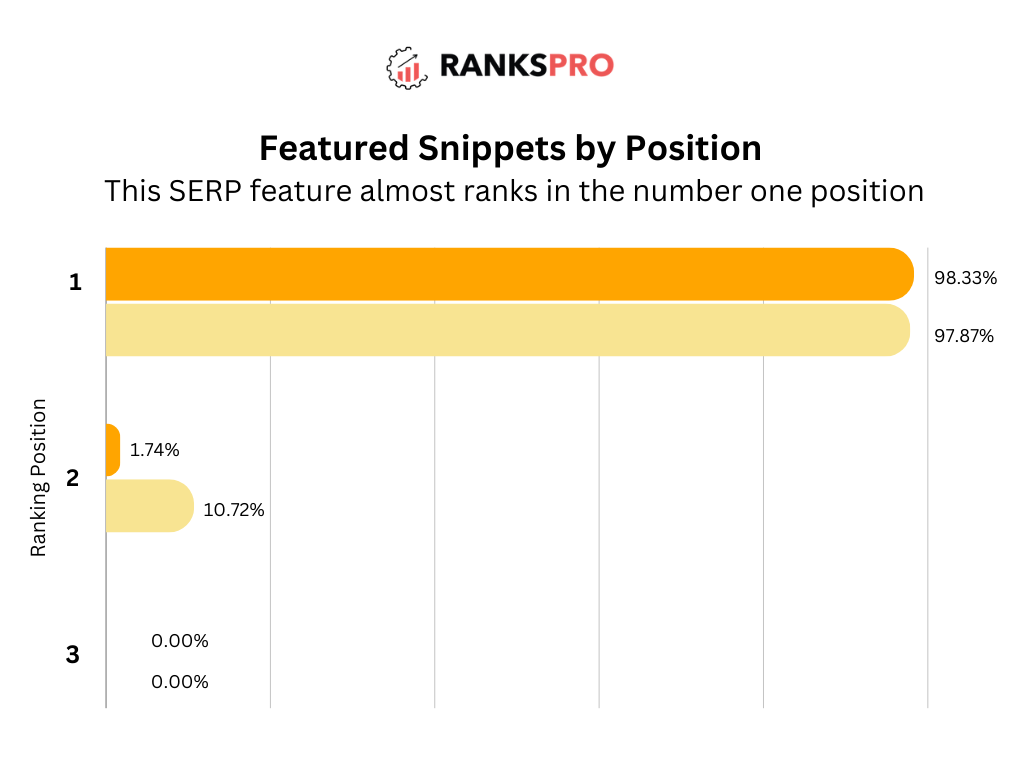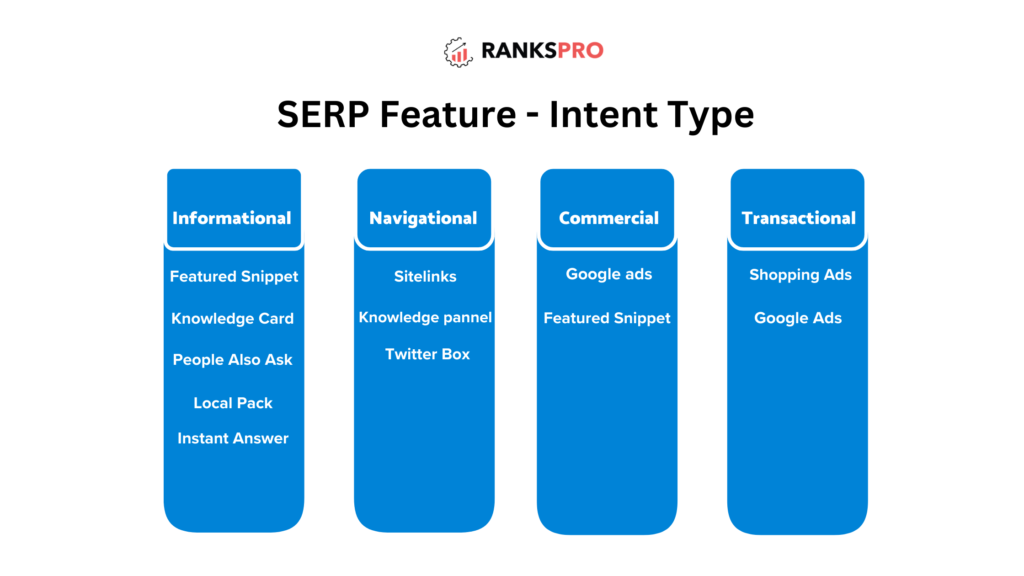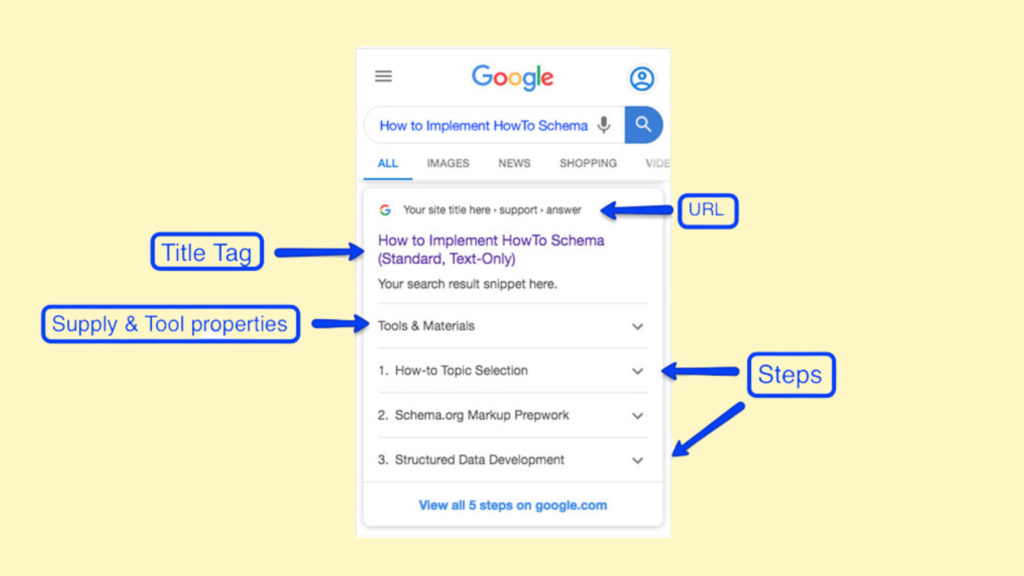In the rapidly changing landscape of search engine optimization (SEO), mere ranking on the first page of Google is no longer enough to capture the audience’s attention. The center of focus has shifted towards SERP features—those dynamic, attention-grabbing features like featured snippets, knowledge panels, and People Also Ask boxes dominating the search scene.
Such features not only boost visibility but also offer an opportunity to leapfrog traditional rankings and drive more traffic toward your website. But how do you identify these golden opportunities and position your content to win?
Within this post, we will discuss the different actionable strategies to reveal how to find SERP feature opportunities and optimize your content further to rank for these SERPs.
Whether you wish to secure a featured snippet position, rank in the local pack, or gain a spot within the video carousel, this blog should provide you with enough knowledge for your SEO game.
Why Rank in Google SERP Features?
Targeting SERP features is now an inherent business strategy for businesses focusing on online presence. These always changing features, which could often be found above or off to the side of organic search engine results, provide unique benefits with potentially dramatic effects on user presence, traffic, and engagement on your website.
Let’s dive deeper into this.
1. Enhanced Visibility Than Organic Results
SERP features, like featured snippets, local packs, and knowledge panels, often appear at the top of the search results page above the organic rankings-which means your content will get noticed even if it doesn’t rank #1 organically.
For example:
- A featured snippet that directly answers a user query can catch the user’s eye before scrolling down to more traditional listings.

- Any video carousels and image packs are heavy on visual dimensions than the plain text results.
You hence ensure your content is more likely to draw clicks when you get a spot in these kinds of features on the search results page that otherwise is full with lots of stuff.
2. Potential to Bypass Traditional #1 Ranking
SERP ranking allows you to jump ahead of your competition, even if the domain authority or organic rankings are higher. For instance:
- A blog post that is at position five organically will still win the featured snippet if it gives the shortest and most relevant answer to the question.
- A local business can appear in the sought-after “local pack” even if its website is not dominating the organic results for a location-based keyword.
It is most useful to a smaller or newer website competing against entrenched players because it can circumvent traditional rankings.
3. Rich Results That Engage Users Better
SERP features are designed to give users quick, comprehensive, and visually appealing information. This rich experience leads to higher engagement because the user is attracted to interactive elements such as:
- People Also Ask boxes: They encourage the user to explore related queries that may bring them back to your content.
- Knowledge graphs and infographics: They provide authoritative and visually appealing information that builds trust.
- Video and image carousels: Catch attention through dynamic content that appeals to visual learners.
Engagement with these features can enhance CTR, increase more targeted traffic, and reduce bounce rates.
Examples of real-life businesses used SERP features
Many businesses can easily take control of their respective niches through SERP features:
- Featured Snippets: A recipe blog might take the snippet of “how to bake banana bread” if it was structured as a step-by-step explanation. That snippet will drive tons of traffic but also shows authority on that niche and area of interest.

- Local Packs: A small coffee shop optimizing its Google My Business profile might appear in the “local pack” for a search like “best coffee shop near me,” sending in foot traffic and online orders.
- Video Carousels: A fitness brand that posts workout tutorials on YouTube will rank in the video carousel for “quick home workouts,” increasing both their video views and website visits.
These examples show how targeting SERP features can have a transformative effect. Optimization of your content to the elements will not only boost your SEO performance but also connect with your audience meaningfully.
How to Find SERP Opportunities?
Identifying SERP feature opportunities is a major part of modern SEO strategy. They will help you understand how to craft your content for rich search results, featured snippets, People Also Ask boxes, local packs, and video carousels.
Here is how to find SERP feature opportunities step by step.
1. Check Your Existing Content for SERP Feature Potential
Sort using the Search Console’s “Performance” report to determine queries where your site already ranks in the top 10. Use such queries as an entry point since they can lead to the occurrence of SERP features for them.
Adjust content further to maximize your possibility. Ask whether your content form meets the SERP feature requirement of your keyword. In short, it could mean reformatting a list or bulleted in the snippet.
If videos dominate the SERP, consider creating video content on the topic.
2. Analyze Competitors for Missed Opportunities
Identify gaps in competitors’ content that you can take advantage of.
For example, if a competitor features a snippet for a topic and their information is outdated or partial, create a more comprehensive, up-to-date piece of content.
Analyze their strategy from the beginning to understand why their content ranks for certain SERP features.
3. Research According to Search Intent
Understanding the intention behind a query is highly important in deciding which of the SERP features are relevant.

- Informational: Queries such as “how to” or “what is” often result in featured snippets, PAA boxes, or video carousels.
- Transactional: Queries like “buy shoes online” might result in shopping ads or product carousels.
- Navigational: Brand-specific searches can result in knowledge panels or sitelinks.
Matching the type of query to the possible SERP feature can help you focus efforts on the right areas.
4. Identify local opportunities
Targeting local customers requires focus on local SEO. Try to look for terms such as “near me” or more location-based query. Use tools such as RanksPro to check the local pack opportunities.
Google My Business can be optimized using accurate information, reviews, and photos. Thus, more visibility in the local results.
5. Stay Updated to Latest SERP Trends
SERP features constantly change with Google’s algorithms and user behavior. Monitor trends for new developments using the tools MozCast or RankRanger’s SERP Features Tracker to discover emerging opportunities.
Pay attention to trends for how features are displayed-what’s gaining more prominence as a video content type or some new interactive features, for example.
How to Rank on Google SERP Features?
Here is more in-depth information on optimizing your content and website to rank for the multiple Google SERP features ranging from Featured Snippets to the Local Pack.
1. Optimize content for featured snippets
Featured Snippets are short answers that Google shows on top of the SERP. They are especially useful for those queries, where users want answers directly.
- Answer frequent questions directly: Research what your niche audience is most likely to ask and answer them directly in your content. Use H2 and H3 heading for question-based subtitles then proceed to give short informative answers for each question.
- Apply structured content: Apply bullet points, numbered lists, or tables as this is the preferred form in case of featured snippets. If the answer requires a number of steps explaining or has several elements, make short list explaining the query in words.
- Target the long-tail keywords: Long-tail keywords often match user questions. Identify terms and phrases that has 3 or more words, related to your services, products or niche.
2. Utilize schema markup for rich snippets
Rich Snippets bring along other details such as reviews, ratings, recipes, or even prices to the result search itself. To receive this snippet, sites must be using structured data or schema markup.
Apply schema markup to items of import such as reviews, products, recipes, or events. You can assist in applying this markup in your HTML by using tools such as Google’s Structured Data Markup Helper and Schema.org.

Ensure that you are showing correct data and that fulfills Google’s guidelines on structured data so as not to penalize or remove markups. Also, ensure the correctness and relevance of the data you are presenting or updating for users.
3. Target question-based content for People Also Ask (PAA) feature
The People Also Ask box shows questions about the original search term and gives quick answers. Ranking here can give you another chance to capture traffic.
Add questions throughout your content which might reflect typical PAA queries and answer them directly using brief paragraphs. As with Featured Snippets, the PAA box prefers direct simple answers.
Use the question as a subheading and support it with a 40-60-word answer that fully answers the question. Address similar questions with slight word choice variations to increase your chances of appearing multiple times in the results of the PAA.
4. Focus on Local SEO to Rank in the Local Pack
The Local Pack highlights top local businesses, appearing prominently on SERPs for location-based queries. It’s essential for driving local traffic.
- Claim and optimize Google My Business listing: Ensure your Google My Business profile is claimed, verified, and fully optimized. Include accurate business information, operating hours, contact details, and a compelling description.
- Encourage positive reviews: Google often ranks businesses higher in the Local Pack if they have numerous, high-quality reviews. Encourage satisfied customers to leave reviews on Google and respond to them professionally.
- Add location-based keywords: Include your location in titles, meta descriptions, and content on your website. Keywords like “near me” or “[Service] in [City]” are particularly helpful for local SEO.
5. Focus on Right Keywords
Keyword targeting is the cornerstone for optimization for SERP features. Long-tail and question-based queries often trigger the occurrence of SERP features like featured snippets or PAA boxes.
Manually search for your target keywords and examine the existing SERP features. Ask yourself:
- What type of content appears in featured snippets?
- Are the results video-heavy or text-heavy?
- What format (list, table, or paragraph) is most common?
For instance, do not optimize for the general term “digital marketing”; target specific queries like “how does digital marketing work” or “digital marketing strategies for small businesses.”
The specific terms best correlate with user intent, therefore they are more likely to be surfaced in SERP features.
6. Focus on Technical SEO
Use technical SEO to increase the opportunities of being on a SERP feature since it allows search engines to crawl and understand your content.
Here are the tips you should follow:
- Optimize for mobile-responsiveness and fast loading: This is important for two reasons: good user experience and for Google’s ranking conditions. Identify and fix performance issues by using tools such as Google PageSpeed Insights.
- Implementing data structures: Add structured data markup to your site, such as schema, so search engines understand your content. For examples: use FAQ schema for greater probability in FAQ-rich results.
- Use recipe schema for content regarding recipes: Structured data further allows features such as rating by stars, price, and availability to display within listings, making it more interactive with the end user.
Do SERP Analysis with RanksPro
Having the proper tools is necessary to find and utilize SERP feature opportunities. RanksPro, a comprehensive SEO platform, can make this process much easier with strong features designed for SERP analysis and optimization.
- Local Rank Tracking: RanksPro offers accurate local rank tracking to help you track how your content is ranking in specific geographic areas. This is particularly useful when targeting local packs or location-based keywords.
- Google Map Rankings: RanksPro offers insights into Google Map rankings that help you monitor how well your business is performing in map-based search results if your business relies on local search traffic.
- Competitor Monitoring: RanksPro enables you to analyze the SERP features they dominate, uncover their backlink strategies, and monitor their performance.
- Backlink Profile Analysis: RanksPro’s backlink profile analysis provides you with an in-depth view of your link-building performance. It identifies strengths, weaknesses, and opportunities for building authoritative links that will improve your rankings.
- Organic Traffic Analysis: Know which keywords and SERP features are bringing in the most organic traffic to your site with RanksPro. It identifies high-performing content so that you know which areas to concentrate on, which will help bring better results.
- Daily Performance Updates: The daily updates give real-time insights into your rankings, traffic, and SERP performance, helping you respond to changes quickly and stay ahead of the curve.
By using RanksPro, you are able to streamline your SERP analysis and come up with actionable insights from your SEO strategy. If you are targeting featured snippets, local packs, or other SERP features, RanksPro’s comprehensive tools make it easier to track and optimize and achieve what you want.




